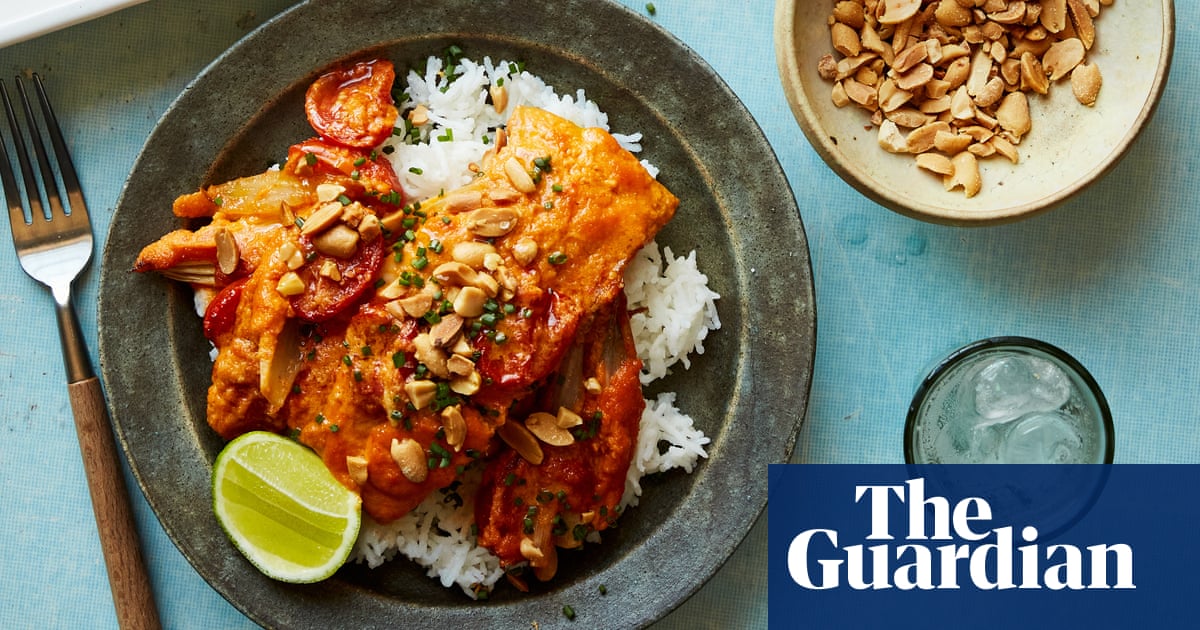This is a lovely, fiery variation on my favourite weeknight dinner, namely “any fish topped with harissa”. Hake is my new go-to white fish: it’s sustainable, it has a lovely texture, it roasts beautifully and it’s the perfect foil for a spicy topping. My sambal pays homage to the Indonesian versions made with tomatoes and chilli – it starts off as a light, fresh sauce that cooks down beautifully with the fish and tomatoes.
For ease, I use a high-speed blender to make the sambal.
Prep15 minCook25 minServes2
300g cherry vine tomatoes, halved4 echalion shallots, peeled and quartered1tbsp neutral oil1tsp sea salt flakes2 thick hake fillets(about 160g each)30g salted peanuts,roughly chopped5g chives, finely slicedHot white rice, to serve
For the sambal2 largelong red chillies, likereallylarge ones, deseeded60g cherry vine tomatoes½ lemongrass stick, roughly chopped2echalionshallots, peeled2garlic cloves1tsp sea salt flakes, plus extra to serve20ml neutral oil1tbsp palm sugar, or dark brown sugar½ lime, juiced, plus extra to serve
Heat the oven to 220C (200C fan)/425F/gas 7. Tip the halved cherry tomatoes, shallots, oil and sea salt into a roasting tin that’s just large enough to hold everything in one layer, toss to mix well, then spread out evenly and roast for 10 minutes.
Meanwhile, tip all the ingredients for the sambal into a high-speed blender and blend to a smooth, thin sauce that’s the consistency of single cream.
Once the tomatoes and onions have had 10 minutes, turn down the oven to 200C (180C fan)/390F/gas 6. Take the roasting tin out of the oven, make two wells in the tomato mixture with the back of a spoon, then place a hake fillet in each of them. Spread a good two to three tablespoons of the sambal over the fish, then stir the rest into the tomatoes and shallots. Return the tin to the oven until the fish is just cooked through – 18 minutes for very thick fillets, 15 minutes for thinner ones – then taste and add a little more salt or lime juice, if you wish.
Scatter the salted peanuts and chives all over the top, then serve with hot white rice.
The Guardian aims to publish recipes for sustainable fish. Check ratings in your region:UK;Australia;US.
